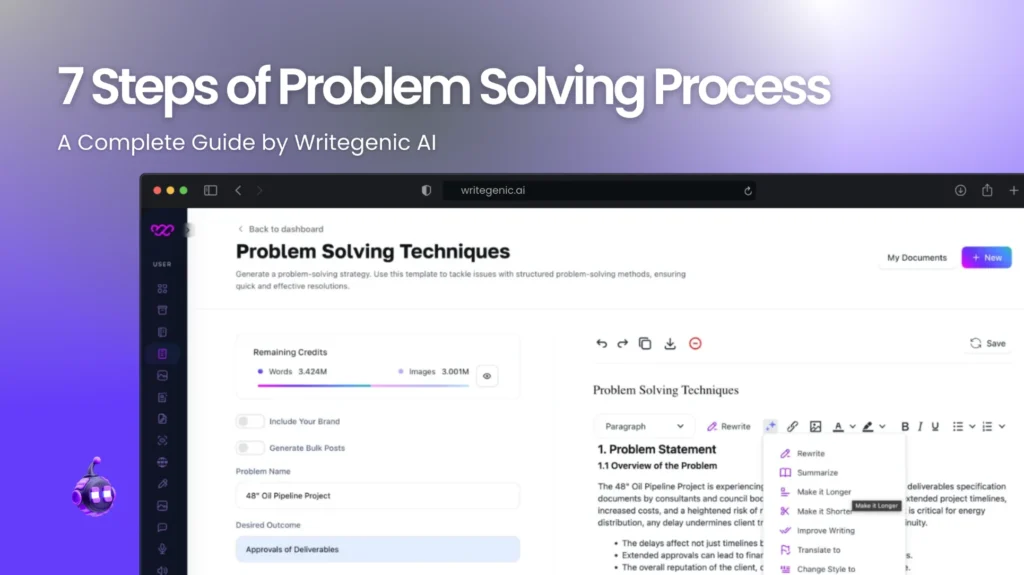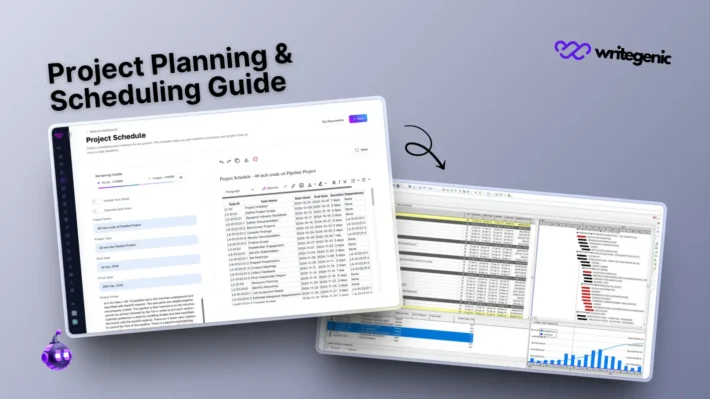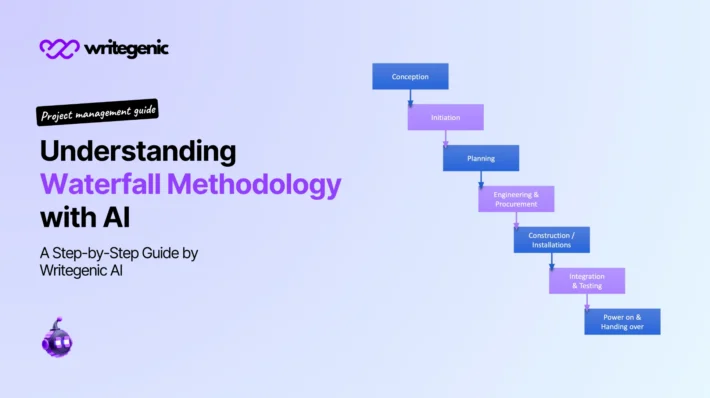7 Steps of Problem Solving Process: A Complete Guide

The problem solving process plays an important role in our everyday lives and careers. No matter if you’re solving customer problems, working to boost team performance or handling issues on projects, the problem solving process helps you reach good results, faster.
In this guide, we will cover the full steps of problem solving process, how they are used in real situations and the tools and methods that are most helpful. It brings out that successful results rely on both Problem Solving and Decision Making.
Table of Contents
What Is the Problem Solving Process?
The problem solving process is divided into steps that help you identify, analyze and address it. By using this approach, decisions are logical, based on data and creative and they help create solutions that last. Rather than reacting to situations, this method asks leaders to think ahead and keep reviewing their progress.
The essential aspect of problem solving is changing the present situation (with a problem) into a future situation (where the problem is solved). This is also useful for personal tasks, running business operations and planning for organizations. It plays a crucial role in Problem Solving in Business, where timely and strategic actions determine success.
The 7 Steps of Problem Solving
1. Identify the Problem
The essential first step in the problem solving process is knowing that a problem exists. You need to understand the problem, how it affects things in your company and why action is required. Clarifying the problem at the beginning helps you resolve it better.
2. Gather Relevant Information
Once the problem is set out, the next task is to gather data. This process might use reports, get feedback, do interviews or observe people in person. Getting engaged information will help to make an accurate diagnosis.
3. Analyze the Root Cause
Don’t limit yourself to what you can observe. Consider using the 5 Whys, Fishbone Diagram or Pareto Analysis to find the key reason for the issue. Discovering the root problem helps to stop the issue from happening again.
4. Develop Potential Solutions
List as many potential solutions as you can think of. At this point, avoid judging your ideas and concentrate on being creative and putting down as many as possible. You can also do research into industry standards or consult with experts.
5. Evaluate and Select the Best Solution
Make sure each suggested solution fits the criteria related to cost, feasibility, time and risk. Consider using a decision matrix or calculate the cost and benefits before deciding. Discussing with stakeholders can guide you to the right path.
6. Implement the Solution
When the solution has been found, start with putting it into practice. Decide who will take on what duties, manage the resources available and set up a schedule. People will be able to work successfully when the tasks are boldly communicated and people are held accountable.
7. Monitor Results and Review Effectiveness
Check on the development and ask others for feedback. Check if the problem was fixed and see what the team learned along the way. If you are still having issues, go back to previous steps and change them appropriately. This allows for continued growth and progress in the problem solving process.
Real-World Problem Solving Method Example
Scenario: Customer support staff notice more support requests that cannot be addressed right away.
- Identify Problem: An increase in the number of unresolved support tickets.
- Gather Information: Check ticket logs, review what customers have said and check availability of staff.
- Root Cause Analysis: Delays are because the company does not have clear policies for escalation within departments.
- Solutions Developed: The company introduced new SOPs, performed training and bought software for automatic routing of tickets.
- Select Solution: Use automation and adopt a new training schedule.
- Implement: Introduce new SOPs one part at a time, while providing help to staff.
- Monitor: Resolution time for tickets increases by 30% in the first six weeks.
Common Problem Solving Techniques
Different challenges require different strategies. Here are a few widely used techniques to consider:
Brainstorming
Allows people to share their ideas freely, even without being judged straight away. Helpful for coming up with various possible answers.
Root Cause Analysis
Allows professionals to focus on the root cause rather than the consequences.
SWOT Analysis
Examines strengths, weaknesses, opportunities and threats to help make the right decision.
Flowcharts and Diagrams
Diagrams or graphs to show how tasks are done and find inefficiencies.
Mind Mapping
Draw pictures to help structure your ideas and discover their connections to create solutions.
The 3 Approaches to Problem Solving
Different problems require different ways of solving them.
Analytical Approach
Relying on data and logical thinking. It works best when talking about technical or financial matters that mainly rely on data and stats.
Creative Approach
Inspires people to try fresh approaches. Helps a lot in design, marketing and new product development.
Collaborative Approach
Encourages team members to provide different ideas to tackle problems together. This is regular in roles where a team must work together on several tasks.
A combination of the methods above generally results in better and more creative outcomes.
Importance of Problem Solving Skills
When you solve problems properly, your decisions are better, you are more productive and team morale rises. It makes things less stressful, enhances flexibility and prepares both people and companies for times of uncertainty.
Mastery of the problem solving process helps:
- Avoid repeated mistakes
- Improve resource management
- Foster innovation
- Achieve long-term success
The Importance of Problem Solving extends beyond fixing issues—it builds a proactive, solution-oriented mindset that drives continuous improvement.
Conclusion
The problem solving process gives a clear set of steps for finding, examining and solving problems. When you follow the 7 steps of problem solving, make use of powerful techniques and learn about several problem solving techniques, you can decide with greater confidence and effectiveness.
Strong problem solving skills are important for students, managers and entrepreneurs to succeed, innovate and stay strong in any situation.
FAQs
Why is the problem solving process important in business?
By following the problem solving process, businesses ensure they make good choices, minimize risks and do well. It allows groups to address concerns fast, stay productive and invent new solutions.
How can I apply the problem solving process in everyday life?
Whenever you face problems like budgeting, organizing events or dealing with conflicts, use the problem solving process: start by defining the problem, assess different approaches and pick the best one.
What are the key stages in the Problem Solving Process?
The main steps of problem solving process are identifying the issue, gathering facts, finding the cause, developing possible options, reviewing them, choosing one, applying the option and checking if the solution worked. Performing these steps makes sure that the problem is worked through methodically.


